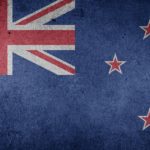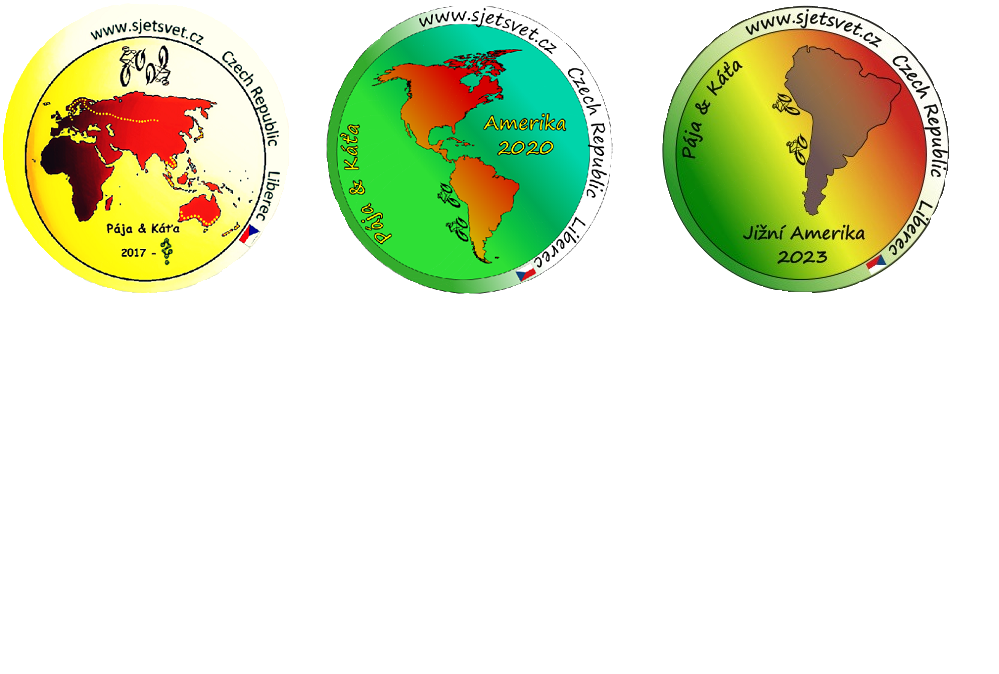New Zealand – South Island 2/3
New Zealand – South Island – part 2
7.12.2018 – 31.12.2018. 1362km
Tapawera, a small village in the Motueka Valley, had become our home for 67 days. That’s exactly how long our hops “part time job” lasted. The work was very demanding, but we are also glad to add another experience to CV. It was also our last job here in New Zealand and actually until our return home. We had to celebrate it properly. Last days on the farm was bad weather, but it gave us time to prepare home-made bread and biscuits, and then we could hit the road.
We headed for the Nelson Lakes National Park, to the village of Saint Arnaud, which is the gateway to the Angelus hut track, that we wanted to hike. Our friend Peta from hops farm wanted to hike this two-day track too, so we decided to go together. In the afternoon we reached the village of St. Arnaud, where we met Peta and put up our tents at the beautiful Lake Rotoiti. In the evening, we packed the necessary things for the trip, and because Peta has two large backpacks, she could lend us one of them. The next morning, we went to the information center where we stored the rest of our stuff and bikes for a small fee, paid for the camp in the mountains, put backpacks on our back and started our hiking trip. First we had to go about 7km to the Mt. Robert carpark, where is one of official start of the track. Usually, people are driving there by car, we had to walk. After just a few meters, we found that with all the weight on our back it wouldn‘t be fun. The last 2km to the carpark were demanding, the road was steeper and steeper and we literally trek. Suddenly the car with a young family stopped at us and offered us to jump in. We felt so happy.
After a pleasant ride and rest we finally joined the track. The worst section with the highest elevation was at the beginning. As if we didn‘t have a rest, we were exhausted again, our hearts were beating very fast and we were sweating. At the top we had a rest and we also left the last views of Lake Rotoiti. Further, the track led to a wide ridge of mountains, later it was only a narrow footpath with occasional downhill or uphill. It wasn‘t easy at all, a strong wind blew up, the road was stony, one had to be careful where to step. The view of surrounding mountains, some of them still snowy, or clear mountain lakes, were stunning, we knew that the mad effort was worth it . After a few hours we finally reached our destination and saw in a valley the Angelu hut, a cottage that lies at an altitude of 1650 m above sea level by the magnificent lake of the same name.
To return, we chose another track. We went steeply down to the valley along the river, which we often had to ford. What we’re gonna tell you, the mountain river was’t the hot one. The grassy valley was replaced with a long forest, and we prayed for the end. Exhausted we arrived back to the campsite at Lake Rotoiti. In the evening, when it was dark, we went to the lake because we heard that the eels live there. And they really do!
It was enough walking, back to the saddle. We had a choice to go either east coast or west. Each has its own plus and minus. On the east, there is more traffic and mostly farms, on the west there are glaciers, but it rains there often. We chose the West coast, maybe the rain would avoid us. At the beginning we cycled on the road, landscape was boring, at least the weather was fine. Unfortunately not for a long time. The next day, a heavy rain hit us during the ride. We didn‘t want to wear raincoats, it was too hot for that, but later when we were wet we felt really cold. At the campsite, the owner disnt’t want to let us sleep in a tent in such a weather and gave us a discount on a cottage that had an electric stove. Well, it was great offer.
In Greymouth, the largest city of the West Coast, we joined the West coast wildreness trail that allowed us to ride 132km off the main and the only road that stretches across the coastline. We cycled on the gravel, through meadows, rain forests, around lakes and clear rivers. It was a great change. Back on the road the traffic was fine, but it was quite boring, nothing to see. The only excitement was Lake Ianthe, which we reached on a sunny day. We expected that the water would be very cold, but the opposite was true and we enjoyed a wonderful bath. Damn only to those annoying Sandflies that wanted to suck all our blood.
In fact, the only tourist attraction on the entire west coast is the Franz-Josef and Fox glaciers in the villages of the same name. As we approached the first of them, we heard and saw planty of the helicopters with tourists who paid to get to places where the ice was beautifully clean. The village lives only from the tourists and it’s pretty busy. Nothing for us. We had a problem to find a campsite with a real lawn! We could sleep either on gravel or on an artificial lawn laid on gravel. At the end, we chose gravel.
We woke up in a gray morning, the clouds hid the beauty of the glaciers and the surrounding mountains. Waiting for the next day didn‘t make sense, the forecast was bad for a few days. We managed to get to the next campsite dry, and then the rain came. Luckily, we were already in the sleeping bags. In the morning, the situation wasn‘t better, we stayed at the camp and just watched the unbelievable steady rain. It was raining fir 9 hours!
The Haast pass, crossing the Southern Alps, awaited us. One cyclist, we talked to, told us that it would be very demanding. Eventually it wasn‘t so bad, only 2 km was very steep. On the way, we stopped at the natural attractions of the Blue Pool, which is a short walk through two suspension bridges and crystal clear water at the end. With the group of the tourists we went to the pools. Maybe because the sky wasn‘t clear, but the color of the water didn‘t look like in the magazines, and it wasn‘t more shiny than anywhere else in the river. We were a little disappointed, but at least we walked.
The landscape slowly began to change. From the rainforests, we rode into the valley surrounded by the mountains, and soon the beautiful Lake Hawea and later Lake Wanaka appeared. Because Christmas was coming, we decided to stay in Wanaka for a while. We thought that the campsite further from the city would be quieter, but when we saw hundreds of caravans, inflatable Santa Claus, and running kids, we realized that we were wrong. The Zelanders, as we later learned, like to spend Christmas in camps where they put up large tents, bring grilles, water scooters or boats, and enjoy the most beautiful holidays of the year. Like us when we celebrate the Christmas at a cottage in the mountains.
We set up our tent and went to the city for Christmas shopping. We wanted to prepare a potato salad this year. In order to have the Christmas day even more exciting, we decided to hike to Mt. Roy to see the beautiful sunrise. We went there at three o’clock in the morning and the car park under the mountain was already full of cars. Oh crap! We quickly parked the bikes and started to hike. We were there because of sunrise, but in fact we were fascinated by the moon on the other side. In the evening, we had a beer, potato salad with vege steak and gifts in the form of new merino shirts.
In Zealand, like in the other English-speaking countries, they get gifts in morning 25.12. We saw the children’s joy and then rode for next gift because our bikes deserve it too. It was a new bicycle cover, the old one was compeletly demaged. And that was our Christmas.
We finally had the true summer of Zealand. The temperatures climbed to 40 ° C and the hot asphalt cracked under the wheels. We were heading for the most expensive city in this country, Queenstown. We had to cycle on highway, but we hoped that on the 26th of December the traffic would be weaker due to holidays. It wasn‘t. The road was narrow, the drivers ruthless, and we were exhausted after a while. So we went at least for a break to the beautiful, turquoise river Kawarau. And because there was a free camp, we stayed there.
On maps, we found a cycle path that leads almost from a free camp to the Queenstown. Right now, we had a better day. But we didn‘t want to cycle to the city, because it is very popular and crowded. Nothing for us, we just passed it and kept going. Unfortunately, we were forced to cycle on the main road again. The road was quite hilly and a there was lot of turns, it was even narrower than the previous day, and the drivers were even more rude. When we later joined the next cycle trail and heard nothing but the singing of birds, it was like a heaven.
On the southeast coast is Curio Bay, where people have the chance to swim free with dolphins or see rare yellow-eyed penguins. From morning we were looking forward to getting there. The road was quite demanding, the sun was roaring again, there was no shade anywhere, but the desire to see the marine animals helped us. What we saw when we arrived at the bay was crazy. The campsite was full of tourists and cars, which only parked in it and whose owners were on the beach. Loud music, overcrowded, no shade. For a moment, we considered whether we really want to stay there, but there was no other option of camping. We didn‘t see the dolphins. Penguins were on the beach on the opposite side of the bay and we went there at around 6pm. A moment after we arrived, just one of them crawled to sleep in the bushe, so we saw him for less than a minute and from more than 50 meters. We sat down in front of the rope to the other observers and waited about two hours for another to return from the water. There are 5 penguins on this beach who are heading out into the sea for the dawn and then return slowly to their nests on the mainland during the late afternoon or evening. It is very difficult to see them and we weren’t able to see one more.
We cycled a bit norter on the coast, at a place called Nugget point where one of the most photographed lighthouse in Zealand is located and where was a chance to see penguins. There was a wooden observation with few windows to observe them. We were unlucky again. And so we stayed in a tiny, quiet campsite in the middle of nowhere, with a black cat and a nice owner, where we celebrated the end of the year 2018.



































































 Previous Post
Previous Post